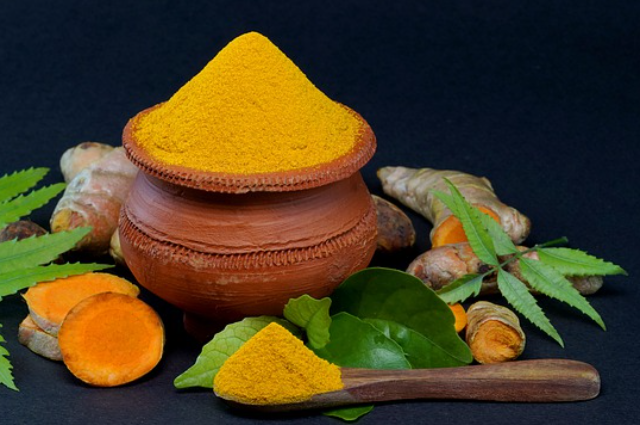
Image by Nirmal Sarkar from Pixabay
Though Ayurveda is nothing new for Indians, but the present wave of Ayurveda is highest and strongest due to Covid-19 and increased trends on leading a healthy lifestyle. As a result, market is suddenly flooded with companies that claims 100% Ayurvedic products, in this Patanjali tops the list with over 9022 crore revenue for FY 2019-20. So lets find out about origin, concept, various allied fields of Ayurveda and try to get answer to most asked question that if it can actually be considered part of medical sciences or its pseudoscience as claimed by various organisations.
ORIGIN
Ayurveda is derived from Sanskrit words Ayur (Life) and Veda (Science or knowledge).This traditional science is believed to be originated 3000 years ago by nyāya- vaiśesika school which glorified ancient knowledge and helped disseminating the knowledge about Ayurveda. Even before these schools it is said it was propagated by brahma from saints to saints to common people in form of orations and writings. Out of 4 major texts that is Rig Veda, Sam Veda, Yajur Veda and Atharva Veda: Rig Veda has information about 67 medicinal plants in form of 1028 shlokas and knowledge of 293 medicinal plants can be easily extracted from atharva Veda.
800BC – 1000BC is regarded as golden period of Indian medicines due to introduction of two most important book that formed the immediate basis of Ayurveda. First was Charaka Samhita produced by Atreya which describes everything about Ayurvedic medicines and second was Sushruta Samhita curated by Dhanwantri, this book revolves around science of surgery and techniques. These two literature formed the basis of Ayurveda and its still referred by Ayurvedic professionals.
CONCEPT
The concept of Ayurveda is based on various aspects like:
- Panch Mahabhoot: Body is said to be made from 5 elements: vayu, jal, prithvi, akash, and teja.
- Tridoshas: There are 3 doshas like.
- Vata Dosha: It controls electrolyte balance, elimination of waste and this dosha is increased in prolonged dryness in body. It controls catabolism of body.
- Pitta Dosha: it maintains body temperature, hunger and thirst hence it regulates metabolism.
- Kapha Dosha: provides lubrication for joints and this dosha is increased due to food that increase calories.
- Saptdhaatus: Ayurveda says that human body is made up of 7 tissues:
- Rasa (Tissue fluids),
- Meda (Fat and connective tissue),
- Rakta (Blood),
- Asthi (Bones),
- Majja (Marrow),
- Mamsa (Muscle), and
- Shukra (Semen) and
- Three Malas (waste products) of the body, viz. Purisha (faeces), Mutra (urine) and Sweda (sweat).
- Tri Malas: Tri Malas are the three types of waste products formed in the body due to metabolic and digestive functions of the body. They comprise of the Mutra (urine), Purisa (faeces), and Sveda (sweat).
- Trayo Dosa Agni: the biological fire of the body for all the metabolic function is called as “Agni”. There are thirteen categories of Agni in a human body
If body has proper coordination among these aspects, then person can stay healthy. Diseases arises due to imbalance between various body constituents, after analysis on basis of above mentioned facts therapy is given like Pancha Karma and various others.
DISCIPLINES AND ALLIED FIELDS
Ayurveda has eight disciples just like medical sciences known as Astang Ayurveda:
- Kayachikitsa (Internal medicine treatment),
- Bhootavidya (Treatment of psychological disorders),
- Kaumar Bhritya (Pediatric treatment),
- Rasayana (Study of geriatrics),
- Vajikarana (Treatment through aphrodisiacs and eugenics),
- Shalya (Surgical treatment),
- Shalakya (Otorhinolaryngological and ophthalmological treatment),
- Agada Tantra (Toxicological studies).
Ayurveda has various applied fields that follow its core principles and concepts.
Naturopathy: It is the method that involves curative power of nature in amalgamation of traditional and modern methods to restore good health.
Yoga: The postures, exercises and meditation is based on pulse and analysis of tridosha.
Unani: This has its origin from Greece and was introduced by Hippocrates. It involves plants-based formulations like oils, tinctures, powders and ointments are used in treatment.
Homeopathy: Homeopathy is based upon the laws of “immunological memory” and “memory of water” it includes treatment with mother of tincture and plant extracts in different dilutions.
Siddha: The Siddha system of medicine is based upon the principle similar to Ayurveda It was Shiva who unfolded the knowledge of Siddha system of medicine to his concert Parvati who handed it down to Nandhidevar and he in turn to the 18 siddhars. In this method Perception is commonly used determinant for treatment of psychosomatic system with the help of minerals, metals and to a lesser extent some plant products.

Image by Bruno /Germany from Pixabay
BRANCH OF MEDICAL SCIENCE OR PSEUDO-SCIENCE
India and other neighboring countries consider Ayurveda as medical care similar to Chinese medicine, homeopathy, western medicines etc. But USA do not license Ayurvedic practitioner to practice Ayurveda as in west they consider it as a system of wellness rather than a system of treatment. Ayurveda is considered as pseudoscience due to lack evidences in convincing use of herbs in treatment of chronic disease.
But experts says that Ayurveda is neither science nor pseudo science.. It's proto traditional form of herbs and medicines used in our society for thousands of years, with it's own limitations, as medicine used in Ayurveda require very strict monitoring due to high lead, mercury and arsenic in various medicines which are harmful for health. Ayurveda is part of our tradition and its not necessary to wait for approval from world for that as its slowly being accepted by world. This is clear as earlier USA tried to patent Neem and recently attempts were made to patent turmeric and ashwagandha which are herbs of prime importance in Ayurveda and has its root in India.
